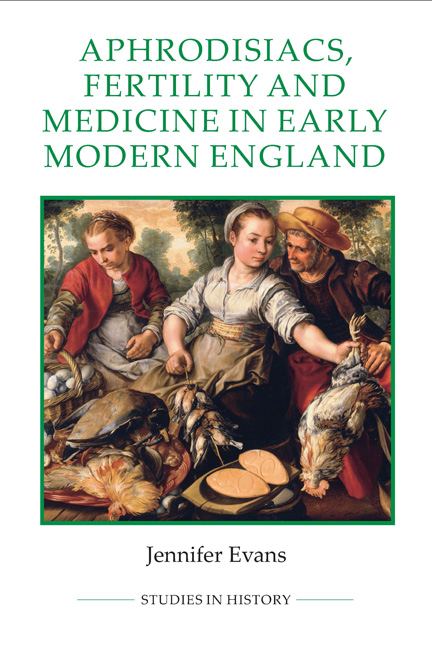Book contents
- Frontmatter
- Contents
- List of illustrations
- Acknowledgements
- Abbreviations
- Note on the text
- Glossary
- Introduction
- 1 Texts, readers and markets
- 2 The reproductive and the infertile body
- 3 Provoking lust and promoting conception
- 4 Enchanted privities and provokers of lust
- 5 Aphrodisiacs, miscarriage and menstruation
- Conclusion
- Bibliography
- Index
2 - The reproductive and the infertile body
Published online by Cambridge University Press: 05 November 2014
- Frontmatter
- Contents
- List of illustrations
- Acknowledgements
- Abbreviations
- Note on the text
- Glossary
- Introduction
- 1 Texts, readers and markets
- 2 The reproductive and the infertile body
- 3 Provoking lust and promoting conception
- 4 Enchanted privities and provokers of lust
- 5 Aphrodisiacs, miscarriage and menstruation
- Conclusion
- Bibliography
- Index
Summary
‘I shall proceed to unravel the mystrey [sic] of Generation’, promised the anonymous author of Aristoteles master-piece in 1684. He, like other medical writers across the early modern period, expected that nearly all men and women wanted to know about sex and reproduction. There were many different models and theories about the process of producing new life, termed ‘generation’. Medical treatises debated the relative contributions that men and women made to reproduction, the function and nature of menstrual blood, the form of the womb and the differences between the sexes. General medical treatises and treatises devoted to obstetrics also considered in detail the reasons why generation failed. There is not scope in this book for a comprehensive discussion of how reproduction and the development of the child in the womb were thought to occur in this period. Rather this chapter will consider some of the elements of sexual difference and reproduction that were questioned and debated in early modern England. Having illuminated which elements of the reproductive body were particularly controversial, the chapter will then consider what was believed to cause infertility in women and in men. It will emphasise the stability that existed across the period in the theories of reproduction with regard to the importance of seed, heat and sexual pleasure. Although numerous elements of the reproductive body and process were questioned, the elements that were thought to cause fertility remained relatively consistent.
- Type
- Chapter
- Information
- Publisher: Boydell & BrewerPrint publication year: 2014



